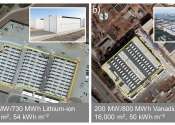When the sun switches off the solar panels
The more the sun shines in the southern German town of Aurach, the more likely it is that Jens Husemann's solar panels will be disconnected from the grid—an exasperating paradox at a time when Germany is navigating an energy ...
Aug 7, 2022
9
301









